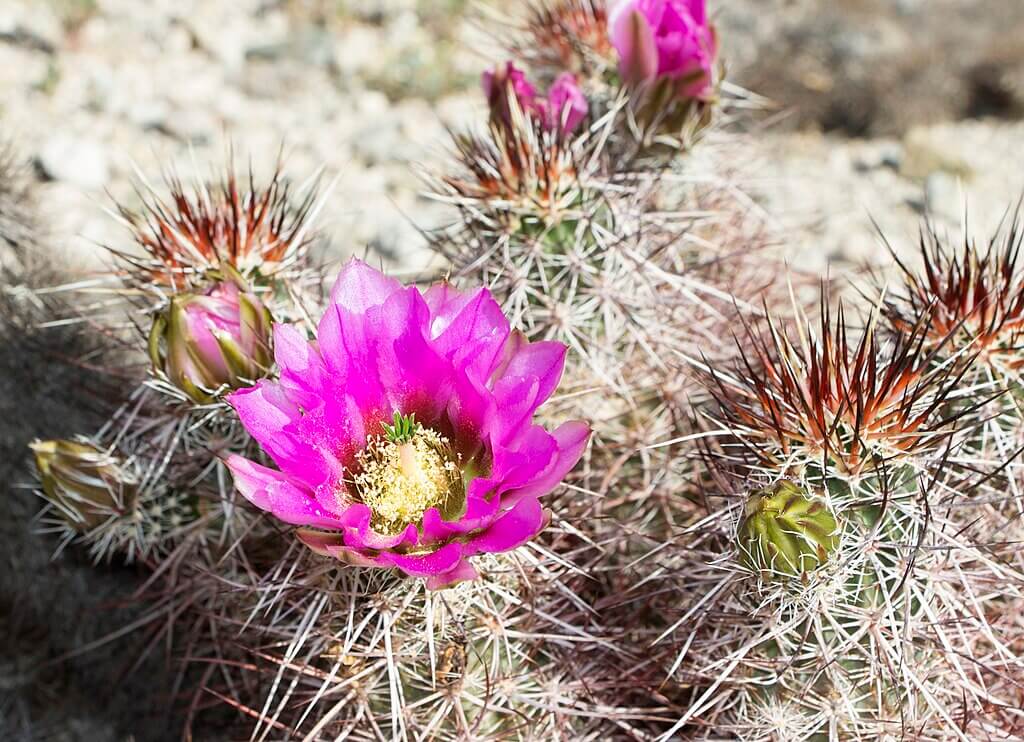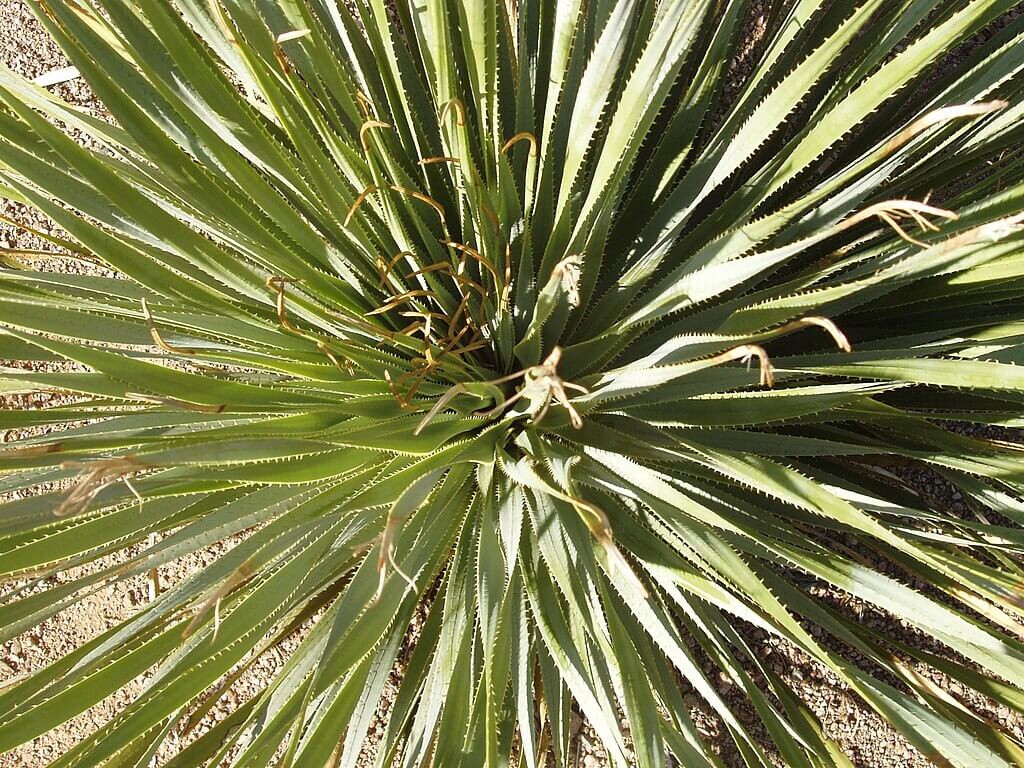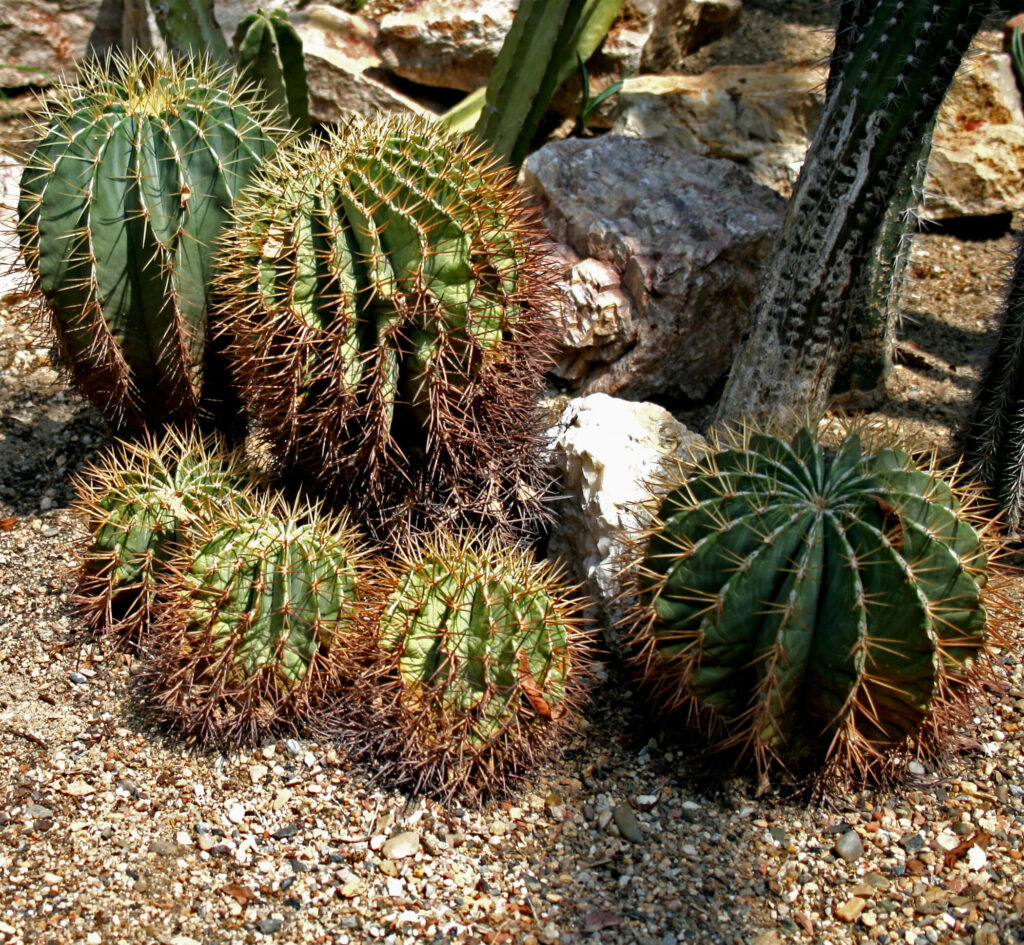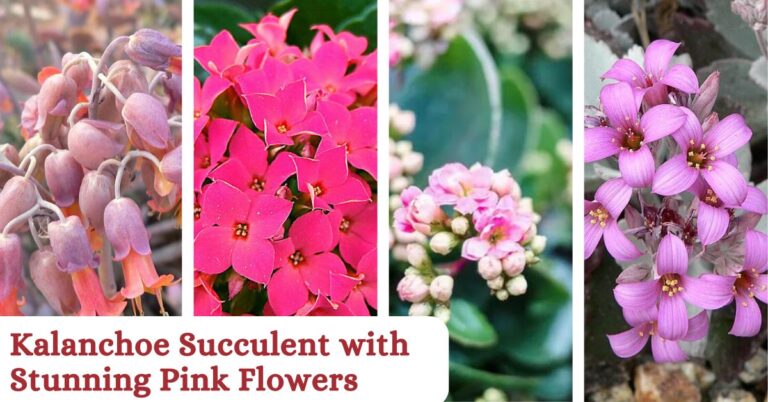New Mexico is home to a diverse and fascinating array of cactus species, each with its own unique characteristics and charm. The state’s arid climate and varied landscapes create the perfect environment for the cacti that have evolved the structure that minimizes water loss and holds onto moisture.
In this article, we’ll explore some of the most interesting New Mexico cactus species and shed light on the different New Mexico cactus types you can find in this beautiful state.
New Mexico Cactus Types
| Plant Name | Scientific Name | Common Characteristics | Flower Colors | Unique Features |
|---|---|---|---|---|
| Prickly Pear | Opuntia spp. | Flat, paddle-like pads, covered in spines and glochids | Yellow, pink, red | Edible fruits (tunas), used in traditional cuisine |
| Cholla | Cylindropuntia spp. | Cylindrical stems, can be bushy or tree-like, spiny | Pink, yellow, red | “Jumping” spines, nests for Wood Rats |
| Barrel Cactus | Ferocactus spp. | Barrel-shaped, prominent ribs with curved spines | Yellow, orange | Stores water, “desert reservoirs” |
| Hedgehog Cactus | Echinocereus spp. | Small, clumping, cylindrical stems with dense spines | Magenta, pink, yellow | Attracts pollinators like bees and hummingbirds |
| Sotol | Dasylirion spp. | Long, narrow leaves with sharp teeth | White, yellow | Not a true cactus, used for weaving and traditional beverages |
Prickly Pear (Opuntia spp.)
Prickly Pear is one of the most recognizable species of new mexico. It is known for the padded-like pads and flowers in shades of yellow, pink, and red which bloom in spring. The pads are often covered in clusters of spines and tiny glochids, which can be tricky to remove if they stick to your skin.
This cactus comes in several varieties such as Purple Prickly Pear Cactus with purple-tinged pads, covered in large spines.

Cholla (Cylindropuntia spp.)
Cholla cacti are known for their cylindrical stems, which can range from short and bushy to tall and tree-like. The one particular species is cane cholla, often called tree cholla, is the most common species of cholla in New Mexico. The cane cholla produces yellow or magenta flowers in late spring or early summer.

Hedgehog Cactus (Echinocereus spp.)
The Hedgehog Cactus, including the claret cup cactus or strawberry hedgehog, is a fascinating New Mexico species known for its small, clumping form and cylindrical stems covered in dense spines.
Found north of the dunes in the Tularosa Basin, these cacti bloom in late spring with striking magenta, pink, and crimson flowers, attracting bees and hummingbirds.
The claret cup cactus can grow up to five feet in diameter with over 75 stems, and its sweet fruits lose their spines as they ripen.

The Agave's Spiny Cousin: The Sotol (Dasylirion spp.)
The Sotol, or Desert Spoon (Dasylirion wheeleri), is a spiny succulent often mistaken for a cactus in New Mexico’s desert landscapes. The Sotol features lengthy, slender leaves having pointy teeth and a unique dish-like hollow at its roots. It can form tall flower shoots that go up to 15 feet in height and have several bunches of little pale greenish-white blossoms.
Although similar in appearance to agave, the Sotol does not die after flowering. Traditionally, its leaves have been used for weaving, and its heart is used to make a traditional alcoholic beverage known as stool.

Barrel Cactus (Ferocactus spp.)
Barrel Cactus is literally a barrel-shaped cactus that can grow quite large and can reach 10 feet tall (3.048 m) in height! It has prominent ribs covered with long and curved spines that keep it safe from being eaten by herbivores. Barrel cacti are various members of the two genera Echinocactus and Ferocactus. We are talking about the Ferocactus which have 30 species included in the genus.
During summertime these kinds of cacti bloom with brightly colored yellow or orange flowers that look really nice when placed against their green bodies.
The amazing thing about this kind of cactus is that its ability to store water enables it to survive even in very dry places. These plants are therefore often dubbed “desert reservoirs”.

Conclusion
New Mexico is the perfect place for these beautiful cacti to be found. From the iconic Prickly Pear to the majestic Cholla, these plants are as diverse as the landscapes they inhabit.
No matter if you are a resident, a traveler or a person who loves plants, by looking at the amazing and unique cacti of New Mexico, you will learn more about this state and therefore create stronger bonds with it.
The next time you find yourself in the Land of Enchantment, do not forget to take some minutes off just to look at these astonishing vegetations along with their distinct charm which they contribute to dry terrains around.
Happy Gardening, Green love to you all!
Frequently Asked Questions
New Mexico is home to a diverse range of cactus species, including Prickly Pear, Cholla, Barrel Cactus, Hedgehog Cactus, and Claret Cup Cactus. Each species has unique characteristics, from the edible fruits of the Prickly Pear to the striking flowers of the Claret Cup Cactus.
One of the rarest cacti is the Discocactus subterraneo-proliferans or
Discocactus heptacanthus , a critically endangered species native to Brazil. This small, globe-shaped cactus is extremely rare due to its limited habitat and the threat of habitat destruction. It is highly sought after by collectors, making it even more difficult to find in the wild. Other rare cacti include the Puna bonnieae and Ariocarpus species, which are also prized for their unique appearance and scarcity.
The Saguaro Cactus (Carnegiea gigantea) is unique to the Sonoran Desert, primarily found in Arizona. It’s an iconic symbol of the American Southwest, known for its tall, tree-like structure and long arms that stretch skyward.
You Might Also Like ✾

The Cultural World Of Cacti: Art, History, And Uses

How to Grow and Care for Red Barrel Cactus

How to Grow & Care for Fire Barrel Cactus

The Kalanchoe Succulent with Yellow Flowers

The Kalanchoe Succulent with Stunning Pink Flowers

How to Propagate Zebra Succulent from Leaves






